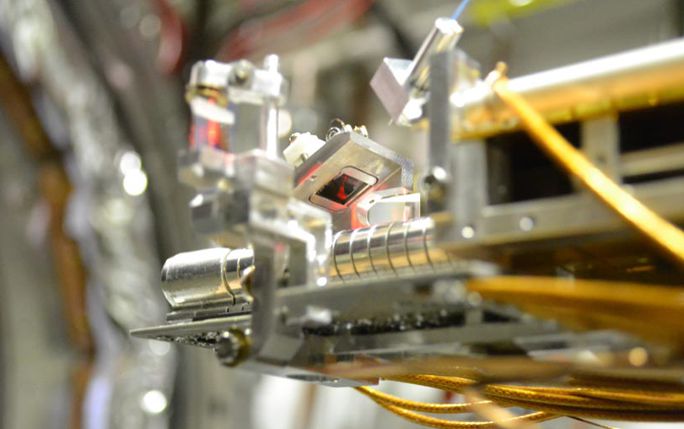New production mechanism for meta-stable Positronium published in Phys Rev A

New research into the production of long-lived 2S Positronium (Ps) has been carried out at the AD facility in CERN, Switzerland. An article just published in Physical Review A by S. Aghion and colleagues from the AEgIS collaboration, involving also AVA Fellow Mattia Fani based at CERN, on ‘Producing long lived 2S positronium via 3P laser excitation in magnetic and electric fields’ explores this.
Positronium is a metastable bound state between a positron and an electron. Positronium has two ground states, the single state (1S/p-Ps) and the triple state (3P/o-Ps). Both states have short lifetimes of around 0.125 ns and 142 ns, respectively and they decay rapidly. The ground states are purely leptonic two-body systems and their short life time makes them a very useful tool for high precision studies of Quantum Electrodynamics (QED). They offer some distinct advantages over analogous calculation and experiments on hydrogen.
Other experiments that use Positronium include precision laser spectroscopy where for example the 1s-2s transition is being studie in detail. AEgIS explores in particular how Positronium can be used to better understand matter-antimatter gravitational interaction. In these studies, it will be important to prepare samples of Positronium in a long-lived state. Otherwise the rapid annihilation would quickly reduce their useful number making it very difficult to distinguish interferometric patterns against the background.
All these experiments can highly benefit from an efficient and clean production of the 2S meta-stable state of Positronium. The experiment outlined in this new paper uses UV laser pulses in an experimental vacuum chamber in the presence of both, a strong magnetic field and a modest electric field, to produce long-lived 2S Positronium. The UV laser pulses excite the Positronium into the 3P/o-Ps level which then deexcites partially in the magnetic and electric field.
The paper also explores the three main de-excitation paths and discusses stark mixing due the presence of the electric field. It uses a novel analysis technique of the single short positronium annihilation lifetime spectra (SSPALS) to successfully detect evidence for the production of the metastable state.
Further information can be found at:
S. Aghion et al. (AEgIS Collaboration), ‘Producing long lived 2s positronium via 3p laser excitation in magnetic and electronics fields’, Phys. Rev. A 98, 013402 (2018). https://doi.org/10.1103/PhysRevA.98.013402